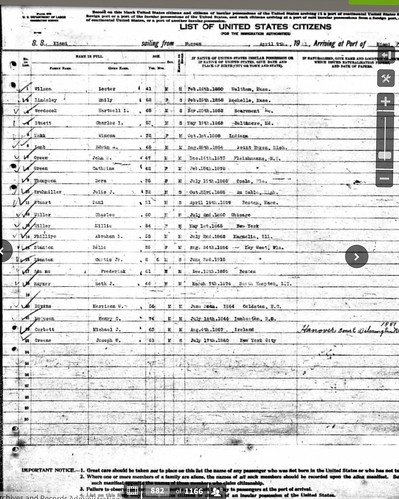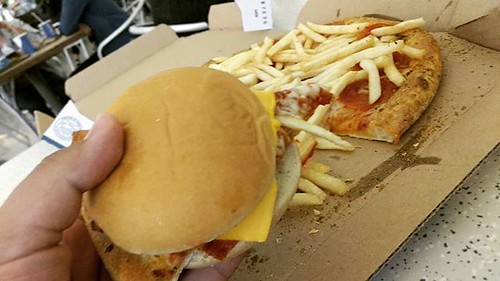Ize greater expiratory flow rates). After EILV approaches TLC, imply lung volume can only be improved by escalating EELV. Consequently, at high levels of VE, VT plateaus after which decreases. At this point, VE increases only by increasing Fb (i.e higher flow rates on account of enhanced activation of expiratory and inspiratory muscles). While the precise mechanisms of this response are certainly not known, it appears that the respiratory controller is programmed to sustain normal timing if achievable and that the onset of dynamic compression on the airways or EFL is actually a strong stimulus to terminate expiration and initiate the subsequent breath (;). With agerelated reductions in maximal expiratory flow andor reductions in maximal expiratory flow due to chronic airflow limitation , we discovered that growing VE for the duration of exercise generally leads to modest Briciclib decreases in EELV that soon create the onset of dynamic compression andor EFL (;;;;). As detailed above, when this happens, additional increases in VE are created by preserving the normal relationship between mean expiratory and inspiratory flow prices and rising EELV. As stated earlier, that is in contrast to escalating expiratory effort to use maximal flows throughout expiration, which means that complete EFL is rarely observed except in intense cases (;). When the magnitude of EFL affectswatermarktext watermarktext watermarktextExerc Sport Sci Rev. Author manuscript; obtainable in PMC January .BabbPageventilatory capacity to some PubMed ID:https://www.ncbi.nlm.nih.gov/pubmed/10496299 fundamental extent, the onset of dynamic compression of the airways as well as minimal EFL affects breathing mechanics and ventilatory regulation including ventilatory output itself (see section on Possible Consequences with all the Onset of EFL Ventilatory Control).The normal ventilatory response to exercising is linear as much as roughly of peak workout. Beyond this, VE becomes nonlinear with operate (e.g oxygen uptake, VO or work price). In general, a low ventilatory response could indicate mechanical ventilatory constraints. Likewise, an excess ventilatory response to exercising could indicate enhanced ventilatory demand (i.e elevated dead space or ventilatory inefficiency). The “break point” in the ventilatory response to exercise is referred to as the ventilatory threshold (VTh), though the mechanism of VTh remains controversial. Nevertheless, locating a VTh is valuable to indentify submaximal from heavy exercise. What exactly is substantially BEC (hydrochloride) web significantly less identified is how approaching EFL may alter the physical exercise ventilatory response from rest to workout (i.e adjust in VE divided by the transform in expired carbon dioxide, VEVCO). Approaching maximal expiratory flow andor the onset of dynamic compression of the airways could influence ventilatory output itself. As stated above, we found that approaching or reaching maximal expiratory flow seems to influence the termination of expiration plus the initiation from the subsequent breath . This  was demonstrated when an expiratory threshold load was applied during exercising, which decreased expiratory flow, decreased the level of EFL, and prolonged expiration thereby decreasing EELV and growing VT slightly in individuals who had EFL. Within the individuals with no EFL, the opposite EELV response was observed. Other people have found a comparable impact by adding an expiratory load such as pursed lip breathing, which decreases the magnitude of dynamic compression of the airways, in the course of rest and physical exercise . In response to pursed lip breathing, healthful adults preserve EELV, prolong expiration, raise VT, and d.Ize higher expiratory flow rates). After EILV approaches TLC, imply lung volume can only be elevated by growing EELV. Hence, at higher levels of VE, VT plateaus after which decreases. At this point, VE increases only by rising Fb (i.e greater flow rates due to improved activation of expiratory and inspiratory muscle tissues). While the precise mechanisms of this response are usually not known, it appears that the respiratory controller is programmed to sustain normal timing if achievable and that the onset of dynamic compression in the airways or EFL is often a strong stimulus to terminate expiration and initiate the subsequent breath (;). With agerelated reductions in maximal expiratory flow andor reductions in maximal expiratory flow resulting from chronic airflow limitation , we found that growing VE throughout exercise typically results in small decreases in EELV that quickly generate the onset of dynamic compression andor EFL (;;;;). As detailed above, once this happens, additional increases in VE are developed by preserving the regular partnership involving mean expiratory and inspiratory flow rates and rising EELV. As stated earlier, this is in contrast to rising expiratory effort to make use of maximal flows throughout expiration, which implies that comprehensive EFL is hardly ever observed except in extreme situations (;). Whilst the magnitude of EFL affectswatermarktext watermarktext watermarktextExerc Sport Sci Rev. Author manuscript; out there in PMC January .BabbPageventilatory capacity to some PubMed ID:https://www.ncbi.nlm.nih.gov/pubmed/10496299 basic extent, the onset of dynamic compression from the airways and even minimal EFL affects breathing mechanics and ventilatory regulation which includes ventilatory output itself (see section on Prospective Consequences with the Onset of EFL Ventilatory Control).The regular
was demonstrated when an expiratory threshold load was applied during exercising, which decreased expiratory flow, decreased the level of EFL, and prolonged expiration thereby decreasing EELV and growing VT slightly in individuals who had EFL. Within the individuals with no EFL, the opposite EELV response was observed. Other people have found a comparable impact by adding an expiratory load such as pursed lip breathing, which decreases the magnitude of dynamic compression of the airways, in the course of rest and physical exercise . In response to pursed lip breathing, healthful adults preserve EELV, prolong expiration, raise VT, and d.Ize higher expiratory flow rates). After EILV approaches TLC, imply lung volume can only be elevated by growing EELV. Hence, at higher levels of VE, VT plateaus after which decreases. At this point, VE increases only by rising Fb (i.e greater flow rates due to improved activation of expiratory and inspiratory muscle tissues). While the precise mechanisms of this response are usually not known, it appears that the respiratory controller is programmed to sustain normal timing if achievable and that the onset of dynamic compression in the airways or EFL is often a strong stimulus to terminate expiration and initiate the subsequent breath (;). With agerelated reductions in maximal expiratory flow andor reductions in maximal expiratory flow resulting from chronic airflow limitation , we found that growing VE throughout exercise typically results in small decreases in EELV that quickly generate the onset of dynamic compression andor EFL (;;;;). As detailed above, once this happens, additional increases in VE are developed by preserving the regular partnership involving mean expiratory and inspiratory flow rates and rising EELV. As stated earlier, this is in contrast to rising expiratory effort to make use of maximal flows throughout expiration, which implies that comprehensive EFL is hardly ever observed except in extreme situations (;). Whilst the magnitude of EFL affectswatermarktext watermarktext watermarktextExerc Sport Sci Rev. Author manuscript; out there in PMC January .BabbPageventilatory capacity to some PubMed ID:https://www.ncbi.nlm.nih.gov/pubmed/10496299 basic extent, the onset of dynamic compression from the airways and even minimal EFL affects breathing mechanics and ventilatory regulation which includes ventilatory output itself (see section on Prospective Consequences with the Onset of EFL Ventilatory Control).The regular  ventilatory response to exercising is linear as much as approximately of peak physical exercise. Beyond this, VE becomes nonlinear with operate (e.g oxygen uptake, VO or work rate). Generally, a low ventilatory response could indicate mechanical ventilatory constraints. Likewise, an excess ventilatory response to physical exercise could indicate enhanced ventilatory demand (i.e enhanced dead space or ventilatory inefficiency). The “break point” inside the ventilatory response to exercising is known as the ventilatory threshold (VTh), despite the fact that the mechanism of VTh remains controversial. Nonetheless, locating a VTh is valuable to indentify submaximal from heavy exercise. What exactly is substantially less identified is how approaching EFL may perhaps alter the workout ventilatory response from rest to exercise (i.e adjust in VE divided by the alter in expired carbon dioxide, VEVCO). Approaching maximal expiratory flow andor the onset of dynamic compression from the airways could influence ventilatory output itself. As stated above, we located that approaching or reaching maximal expiratory flow seems to influence the termination of expiration and the initiation of your subsequent breath . This was demonstrated when an expiratory threshold load was applied during physical exercise, which decreased expiratory flow, decreased the volume of EFL, and prolonged expiration thereby decreasing EELV and rising VT slightly in sufferers who had EFL. Inside the patients without having EFL, the opposite EELV response was observed. Other individuals have found a equivalent effect by adding an expiratory load for example pursed lip breathing, which decreases the magnitude of dynamic compression of your airways, during rest and exercising . In response to pursed lip breathing, healthier adults keep EELV, prolong expiration, increase VT, and d.
ventilatory response to exercising is linear as much as approximately of peak physical exercise. Beyond this, VE becomes nonlinear with operate (e.g oxygen uptake, VO or work rate). Generally, a low ventilatory response could indicate mechanical ventilatory constraints. Likewise, an excess ventilatory response to physical exercise could indicate enhanced ventilatory demand (i.e enhanced dead space or ventilatory inefficiency). The “break point” inside the ventilatory response to exercising is known as the ventilatory threshold (VTh), despite the fact that the mechanism of VTh remains controversial. Nonetheless, locating a VTh is valuable to indentify submaximal from heavy exercise. What exactly is substantially less identified is how approaching EFL may perhaps alter the workout ventilatory response from rest to exercise (i.e adjust in VE divided by the alter in expired carbon dioxide, VEVCO). Approaching maximal expiratory flow andor the onset of dynamic compression from the airways could influence ventilatory output itself. As stated above, we located that approaching or reaching maximal expiratory flow seems to influence the termination of expiration and the initiation of your subsequent breath . This was demonstrated when an expiratory threshold load was applied during physical exercise, which decreased expiratory flow, decreased the volume of EFL, and prolonged expiration thereby decreasing EELV and rising VT slightly in sufferers who had EFL. Inside the patients without having EFL, the opposite EELV response was observed. Other individuals have found a equivalent effect by adding an expiratory load for example pursed lip breathing, which decreases the magnitude of dynamic compression of your airways, during rest and exercising . In response to pursed lip breathing, healthier adults keep EELV, prolong expiration, increase VT, and d.
